Oct. 30, 2009, FORT POLK, La. -- In the days after Sept. 11, 2001, Americans became cognizant of the brave, important role firefighters play in their day-to-day lives. Today though, unless someone is in a car wreck, or has a house fire, they might rarely think about firefighters. It is always assumed that firefighters will be ready to respond if needed. To highlight the firefighting profession on Fort Polk, "The Guardian" spent a 24-hour shift Oct. 20 with the Fort Polk Fire Department.
7 a.m. -- Roll call, equipment maintenance
The day begins at Station No. 1, at the corner of Alabama and Louisiana avenues, as the off-going shift of firefighters lines up across the garage from the oncoming shift. Outside, columns of Soldiers fill the pre-dawn atmosphere with cadence as they run past the station.
The operations chiefs for each shift discuss the last day's issues and the upcoming day with the firefighters. After the briefing, the outgoing crew stow their equipment and exit the station faster than you can say "ladder truck."
Jeremy "Doc" Parker just started his shift and begins checking his truck, Pumper No. 3. He inspects it for functional emergency lights and tools. Parker opens the toolboxes to check that the various tools are accounted for and functional.
8 a.m. -- Captains meeting
All of the captains on duty head over to Station No. 3, at the airfield, for a meeting with the chiefs. The chief officers and captains meeting is a coordination meeting, where fire department leadership discuss plans for training and resources. "We are a multi-discipline organization," said assistant chief Jose Fejarang.
"We have responsibilities like confined-space rescue, hazmat response, weapons of mass destruction response, dive rescue and high-angle/low-angle rescue. We wear a lot of different hats. To be proficient, we've broken the disciplines into committees.
"The captains are the ones in charge of the committees, because they're the subject matter experts. During our meetings, we set definitive goals and hold the captains accountable for their progress. They give us feedback about where they want to go in their disciplines, and we (the chiefs) help them with resources."
During the meeting, a call comes in that there is an aircraft in trouble. Three firemen scramble and drive their truck across the airfield to meet the helicopter. The pilot was able to resolve the problems in-flight though, and the "crash truck" returned to its station.
11:30 a.m. -- Lunch
After the meeting, Pumper No. 3 makes a stop at the shoppette on the way back to the station. Parker and the truck's crew chief, Capt. Brian Van Pelt, order sandwiches from Blimpie's for lunch.
1 p.m. -- Training
Back at the station, the firefighters gather in the day room, which is outfitted wall-to-wall with recliners, to review some paperwork and learn how to fill out common forms. One thing that is immediately apparent is the seriousness with which the firefighters treat their work.
When there is no task at hand, the men are jolly and humorous, but once the training begins or the alarm goes off, they are completely focused on their jobs. "We see a lot of grim stuff," said Lt. William Magyar. "We joke until the bell rings. Then it's serious, and we're out the door."
"As a Soldier going out the gate, you're in survival mode, but here we're going to help somebody," said Lontae Bell, a former Soldier and one of the junior firefighters. Bell served on a deployment to Iraq with 4th Brigade Combat Team, 10th Mountain Division.
"We work for the Soldiers on post, and we try to give them the best service possible," said Magyar.
"Most of us are prior-service and it helps us understand Soldiers better," said Parker.
After the training session, the men of Pumper No. 3 head to the commissary for groceries. This is one situation where it is OK to park in the "fire lane." Once back at the station, Parker begins preparing dinner. "We have the time to do slow cooking -- which is the good cooking," he said, chopping potatoes for stew. Dinner is a sort of hearty hamburger soup, similar to shepherd's pie, but sloppier.
2 p.m. -- PT
In the afternoon, firefighters take time out for physical training. There are weights and treadmills behind the station, but some of the crew head to the gym.
3:15 p.m. -- Fire alarm
At 3:15 the two-toned alarm sounds in the fire station and the firefighter manning the alarm room speaks through the intercom: "Building 3225. Fire alarm." The firefighters scramble to their trucks, and they know right where to go.
"It's Range Control," said Bell. Upon arriving at the building, the firefighters move immediately to their stations. One opens a nearby fire hydrant; another opens the utility room to access the alarm system. Capt. Thomas Craig approaches the person in charge of the building, which has been evacuated, and gathers information about the situation.
"Everyone who is assigned to a truck has set tasks," said Magyar. "All of our trucks have an assigned task. Pumper No. 1 is the first to arrive on site at a fire. My responsibility is to lay out the equipment so the tools are ready for the others when they arrive on scene."
"Everyone generally knows where they need to go and what needs to be done," said Craig. This call turns out to be a false alarm -- one of the automatic alarms malfunctioned. "Some days are easier than others," Craig said. "We might have a rash of runs one day, and the next shift we might not have any."
4 p.m. -- Down time
Life at the fire station centers on the kitchen and day room during the evening. Each fireman is part of the team, but this team is a family and they know each other like brothers. For example, no food is safe in the kitchen. If someone leaves something in the fridge, it might be gone by the time they get back for their next shift. "This is our second family," said Magyar. "Ronnie (Miles) hunts something sweet every night," said Paul Magee.
5 p.m. -- Dinner
The firemen filter into the kitchen, which is adjacent to the day room, and empty the pot of stew in minutes. "Doc" Parker's kitchen creation is a "stick to your ribs" hit -- everyone goes back for a second helping.
7 p.m. -- Movie
The day room fills after dinner as the firefighters gather to watch a flick on the big screen TV.
10 p.m. -- Sleep
The firefighters head to bed one by one after the movie, and take shifts in the alarm room.
6 a.m. -- Wake up, morning chores
Tones sound on the intercom speakers in each of the rooms where the firefighters are bunked. "6 a.m. Wake up." The fire station comes alive with firefighters cleaning floors and tidying up. The trucks are pulled out of the garage and the floor is swept and mopped. The men gather their gear and line up in the garage, across from the next shift, and the cycle begins again. When
Soldiers are busy training and preparing for war, while their Families sleep at home, as Fort Polk units fight the enemy on the front line overseas, the Fort Polk Fire Department stands ready to safeguard this post, 24-hours a day.
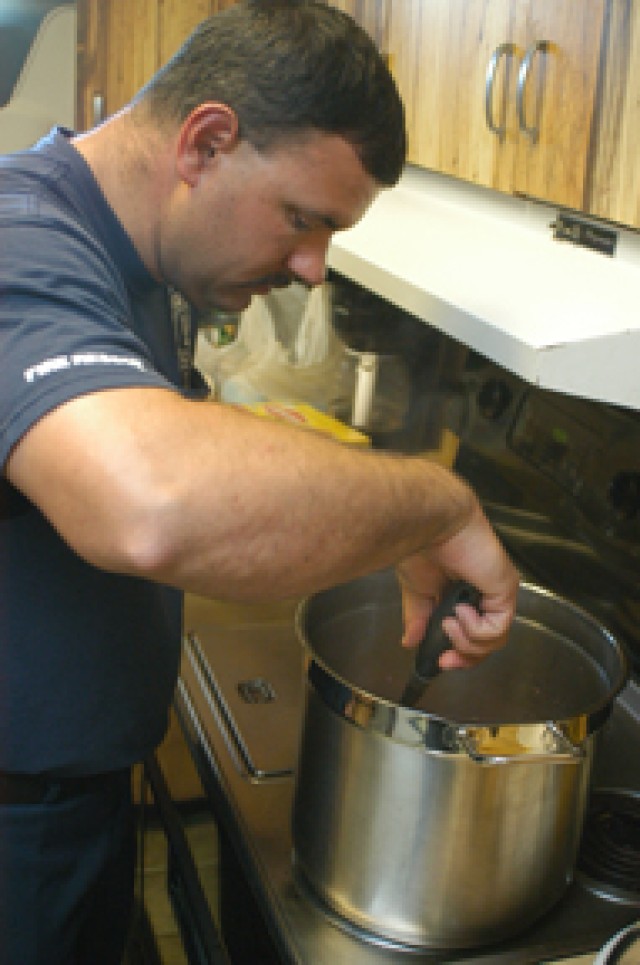
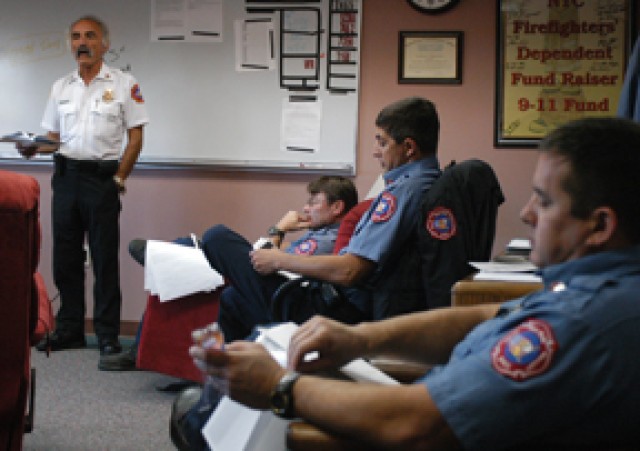
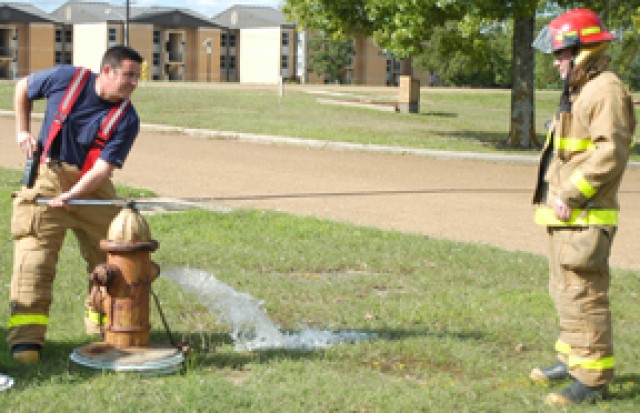
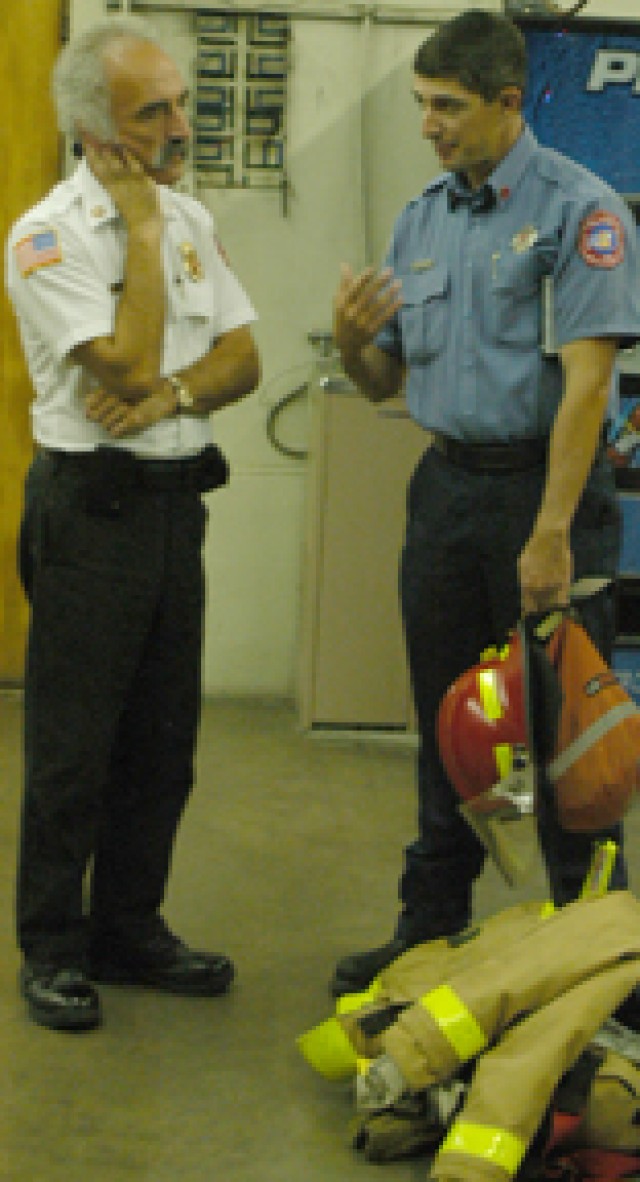
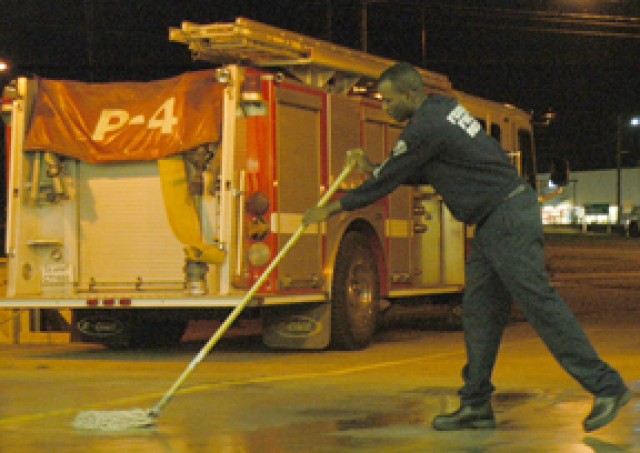
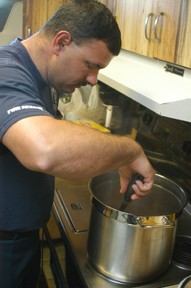
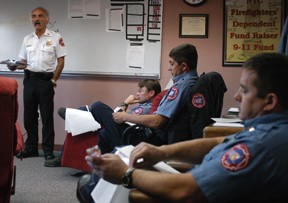
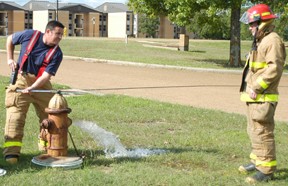
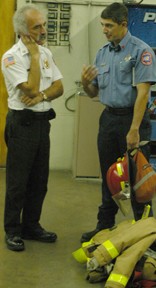
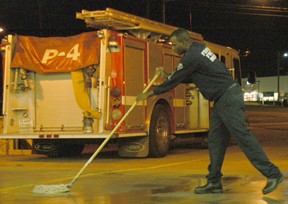
Social Sharing